Fall is a time for cool temperatures, pumpkin spice everything, and unfortunately, tons and tons of dead leaves. Brush and leaf pickup is not only difficult and time-consuming, but figuring out how it works in your area can also be a challenge.
The Importance of Leaf and Brush Pickup
Fall leaves are beautiful—so much so that people flock to forested areas to take in the sights as they change from green to vivid ambers, reds, and yellows. But there’s something a lot less appealing about the changing leaves, and that’s the knowledge that in a few weeks, you’re going to be collecting them all for pickup. Even if your home or business doesn’t have too many trees, their leaves can really pile up. Compound this with a fall breeze blowing your neighbors’ leaves onto your lawn and you’ve got quite a mess on your hands. This is what makes Nashville leaf pickup so important to property owners everywhere.
Leaves deprive your lawn of sunlight, making it nearly impossible for grass to grow. Without sunlight, grass cannot create nutrients, and it dies. It doesn’t take long for a leafy lawn to resemble a forest floor. Leaves accumulating on the lawn trap moisture, leading to the growth of fungus and mold. When you keep leaves on your lawn all winter, this moisture can also overwhelm the grass beneath them. This is why prompt and thorough leaf and brush pickup in Nashville really matters.
It’s tempting to forego the whole act of raking and gathering leaves. After all, leaves are perfectly natural, right? It’s true that fallen leaves do create a whole new ecosystem of their own in forests and unoccupied areas. These decomposing leaves create food and nutrients for plants and animals alike, but they also choke out grass. This means that taking the natural approach to falling leaves will leave you with an unsightly yard come spring. Even if you’re okay with being the leafy lawn on the block, you might not be so content with the other issues leaves bring with them. Dead grass leads to some major issues for homeowners, such as erosion. When spring rolls around, heavy rains can sweep away a lot of your lawn without the strength that grass’ roots provide. This can lead to dangerous conditions, making it hard to navigate without tripping. It can also expose the roots of trees and other plants, and when you add in the decomposing leaves, this also invites pests right into a tree’s most vulnerable area.
Nashville Brush and Leaf Pickup
In the city and surrounding suburbs of Nashville, brush and leaf pickup schedules vary depending on where you live. You can consult the website provided by the city to see when leaf and brush pickups begin for your neighborhood. This site is useful because it shows a map that delineates when brush trucks will be around for you. If you live outside of this area, your town’s website should indicate their leaf and brush pickup schedules if they are available. In Nashville, brush pickup is pretty straightforward. Place your brush near the road in accessible piles. For leaves, Nashville requires that they be placed in biodegradable paper bags. If you’ve ever bagged leaves before, you might be aware of how this makes leaf cleanup even trickier.
Once you get your leaves collected in an area, you’ve got another step before the chore is over. Use shovels and other tools like pitchforks to pick up leaves and bag them. Many leaf-bagging devices are available to assist in bagging leaves, and these are especially useful if you’re doing it alone, as they help hold the bag upright and open for you. Municipal services like brush and leaf pickup are great because they give us an easy way to dispose of leaves. Without this service, where would all the leaves go? In the past, many people would burn leaves and brush each fall, which always led to a streak of house fires and some really smelly, smoky neighborhoods.
Fall Landscaping Services
How do you get rid of leaves in Nashville? If you aren’t interested in putting in hours of work, you’re in luck. Working with a local landscaping company like The Parke Company is an excellent way to make sure your lawn is leaf-free before winter. With comprehensive fall cleanup services, we will handle the raking, blowing, and brush collection for you. For many folks in Nashville, fall is a busy time of catching up on work before winter or spending time with loved ones and doing fall activities, not chores. If you don’t want to pick up all of your own leaves, don’t! We’re here to help. With our specialized equipment and decades of experience, our landscaping experts can make quick work of even the messiest yards this fall.
We properly dispose of leaves and brush, where we compost what we can of leaves and dead plants and create wood chips with the collected brush. Whether you’re concerned about the look of your lawn or not, fall leaf cleanup from The Parke Company should be on your list of priorities before winter takes over. As we’ve learned, leaves can do a lot more than lead to patchy lawns in the spring; they can harm your trees and other parts of your landscaping. If you want to keep your lawn looking green and healthy (and ensure that your property is safe), fall leaf pickup is a crucial service that we can provide.
Take Care of Your Leaves the Easy Way
Ready to learn more about what The Parke Company can offer you this fall in terms of leaf and brush pickup in Nashville? Contact us today for a free consultation and estimate on any landscaping services you may need before winter.





